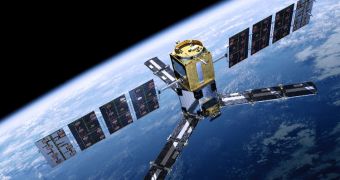December is already upon us, and autumn is theoretically over, but not for Europe. This fall was very dry and warm, which is really unusual for the Old Continent. As such, the European Space Agency (ESA) is having its SMOS water mission keep an eye on things.
As its name implies, the Soil Moisture and Ocean Salinity satellite is capable of monitoring soil moisture around the world, but especially in Europe. During its latest assignment, it was asked to create a map of moisture in European soils.
Experts then cross-referenced this map with one produced in November 2010. The difference between the two is staggering, as you can plainly see here. Climate scientists are currently struggling to explain why is it that so few precipitations have fallen over the continent this year.
A particularly interesting example is the Netherlands, where the average rain level for November is somewhere around 82 millimeters. In 2011, the average rate only rose to 9 mm. This made last month the driest one to be recorded in the country since 1906.
At the same time, extremely dry conditions also affected the Rhine and Elbe rivers, in Germany, causing massive economic losses due to disrupted shipping routes. In addition, the German state of Bavaria had to face a large wildfire, brought on by the lack of precipitations.
In the United Kingdom, the situation is even worse. According to the country's Environment Agency, drought conditions are likely to persist on the island throughout 2012. This will not change unless significantly above-average levels of precipitations fall during winter and spring.
With a water-detection inaccuracy level of as little as 4 percent, SMOS is uniquely equipped to investigate water flow through the top layers of soil. Recent data show that Germany, Austria and Eastern Europe were especially hard-hit by warm, dry conditions.
The new maps can also be used to gain a deeper understanding of the planet's water cycle, and how its soils exchange the chemical with the atmosphere. This is a critically-important factor for determining weather and overall climate in local ecosystems.
“In addition, since the amount of water in soil dictates plant growth and crop yield, the information is useful for agricultural applications and managing water resources,” ESA adds in a press release.

 14 DAY TRIAL //
14 DAY TRIAL //